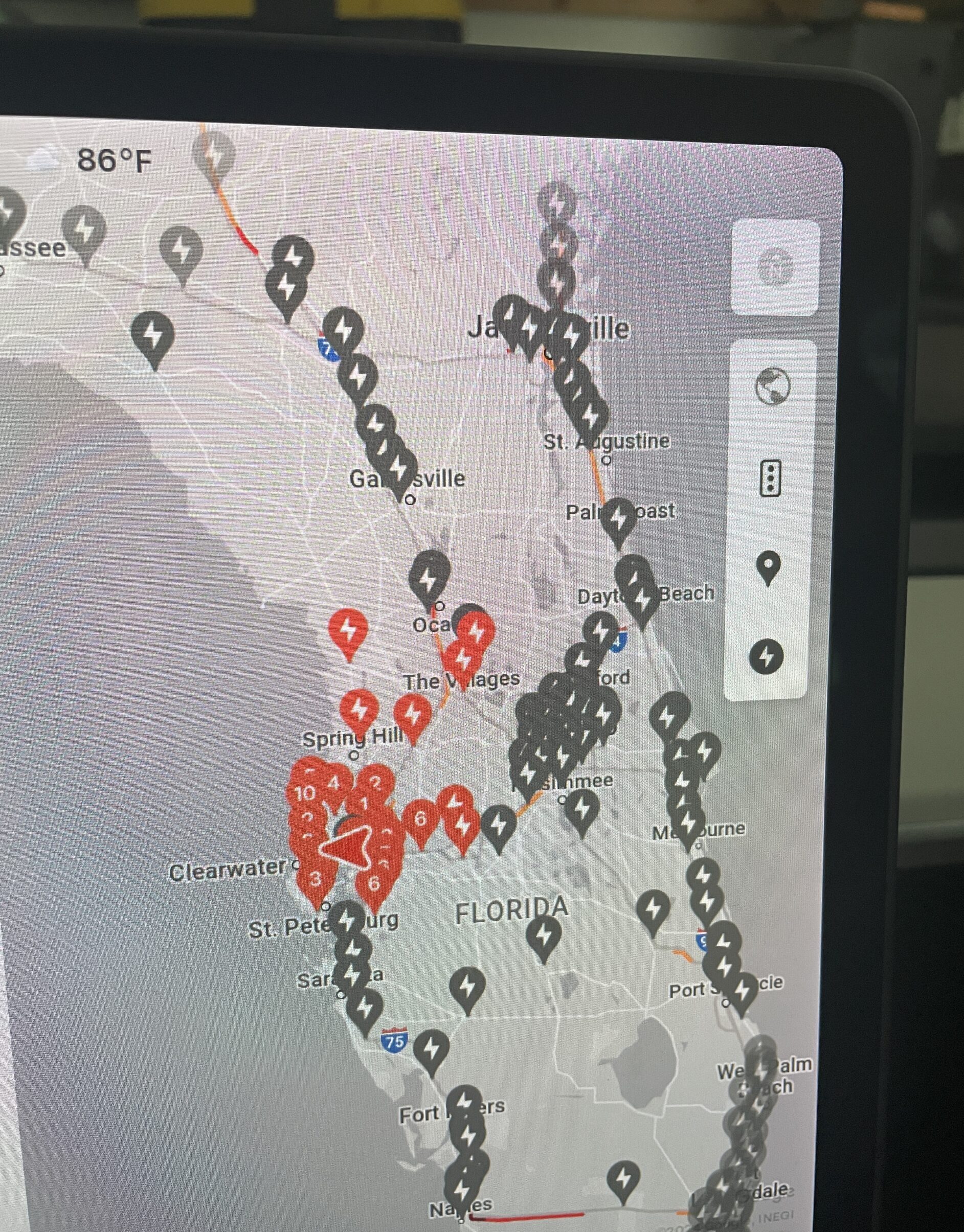Sign up for daily news updates from CleanTechnica on email. Or follow us on Google News!
We provide a glossary for a variety of terms you may encounter when reading about energy and climate change.
While we at RMI try to write in an accessible way, many of us are scientists and engineers, and occasionally (or more often “frequently”) a technical term may slip into our writing without an explanation. For all of you who regularly read about energy and climate change issues, we are providing a list of technical terms and their definitions, along with an example sentence in which it was used. Some of the terms include a link for more information if we have written extensively on that topic.
This list is by no means exhaustive, and we will be updating it regularly, so feel free to bookmark and share this page. Also, please let us know if you have a term you would like us to define.
Anthropogenic — Resulting from the influence of human beings on nature.
- Example: The waste sector is currently the third-largest source of anthropogenic methane emissions.
Behind the meter — Energy systems located on the customer’s side of the utility meter.
- Example: Thanks to behind-the-meter solar, which typically includes residential rooftop solar panels, New England’s grid operator was able to keep the lights on and reduce peak demand during the height of summer.
Carbon capture and sequestration (or storage) (CCS) — Capturing carbon dioxide emissions from power plants and other industrial sources and storing it underground.
- Example: For engineered solutions such as direct air carbon capture and storage (DACCS), there is a growing tension between support for it and a realistic skepticism about a costly and energy-intensive technology that is yet unproven at scale.
Carbon capture, utilization, and storage (CCUS) — Capturing carbon dioxide emissions from power plants and other industrial sources, reusing them for beneficial applications, and storing the remaining emissions underground.
- US steel production can reach near-zero emissions in 2050 with aggressive adoption of energy efficiency; industrial decarbonization; carbon capture, utilization, and storage (CCUS); and low-carbon fuels such as hydrogen.
Carbon dioxide removal (CDR) — Extracting carbon dioxide from the atmosphere.
Circular economy — An economic system designed to minimize waste by reusing, repurposing, and recycling materials to create a closed loop.
CO2e — Carbon dioxide equivalent, or the amount of CO2 that would have the equivalent global warming impact as the same amount of a different greenhouse gas.
COP — The United Nations yearly climate change conference (officially Conference of the Parties).
- Example: RMI heads to COP28 in Dubai guided by a deep legacy of “applied hope” — as much a vision of inspiration as a pragmatic playbook for success.
Demand-side management — Energy efficiency measures designed to encourage consumers to decrease their electricity usage.
- Example: We’re seeing a number of states adopt metrics and scorecards to track GHG emissions avoided by [energy efficiency], demand-side management, and electrification.
Embodied carbon — The sum of all greenhouse gas emissions produced during each stage of a material’s life cycle.
- Example: Designers can significantly reduce a building’s embodied carbon by optimizing building design, designing for material efficiency, using reclaimed or recycled materials, and specifying low-carbon and carbon-storing materials.
- For more: Embodied Carbon 101: Building Materials
Global stocktake — The United Nation’s inventory of the world’s progress on reducing greenhouse gas emissions.
- Example: The “global stocktake”…concluded that we are well off track to limit global warming to 1.5°C by 2100, as agreed to in Paris.
Global warming potential (GWP) — A measure of how a gas contributes to heating the earth’s atmosphere, compared to CO2 over a specific time period.
Greenhouse gases — Gases in the atmosphere that trap heat.
- Example: Where regulating ozone-depleting substances was a success, agreement and action on greenhouse gases (which trap heat in the lower atmosphere as opposed to ODS that deplete the ozone layer itself) has been a slower process.
Green hydrogen — Hydrogen produced using renewable electricity.
- Example: Even at high rates of leakage, green hydrogen has an undeniably positive climate benefit in the short- and long-term, especially compared to the demonstrably large climate harm from the fossil fuels it replaces across the supply chain.
- For more: Clean Energy 101: The Colors of Hydrogen
Grid parity — When an alternative energy source produces electricity at a similar or lower cost to that produced by the electricity grid.
- Example: Grid parity is all about the relative cost of renewable energy compared to conventional energy sources — and if you know anything about renewable energy, it’s that costs have been falling fast.
Just transition — Greening the economy in a way that is as fair and inclusive as possible to everyone concerned.
Levelized cost of energy (or electricity) (LCOE) — The average cost of energy (electricity) generation over the lifetime of the power plant including upfront costs to finance and build a facility along with its estimated lifetime costs for fuel.
- Example: The levelized cost of energy (LCOE) of solar and wind in H1 2023 was just over $40 per MWh, about half that of coal and gas.
Loss and damage — The damage occurred from negative consequences of climate change, usually arising from extreme weather events such as rising sea levels, hurricanes, wildfires, and others.
- Example: On the first day of the annual UN climate conference, COP28, leaders made a historic decision, agreeing to launch and capitalize a loss and damage
Nationally determined contribution (NDC) — A country’s climate action plan to cut greenhouse gas emissions.
- Example: RMI’s updated State Climate Scorecards provide two main indicators of climate progress: (1) how far current policy gets to 2030 climate targets that achieve the US Nationally Determined Contribution under the Paris Agreement and (2) how close current emissions are to these 2030 NDC-aligned levels.
Nature-based solutions — Using natural features (e.g., gardens, parks, trees, bodies of water, and others) to improve a community’s health, environment, and other societal challenges.
NCQG — The New Collective Quantified Goal on Climate Finance will update and replace the commitment that developed countries made (in 2009) to collectively mobilize US$100 billion a year to help developing countries achieve their climate goals. The new goal will be established at COP29.
Negawatt — A unit in watts of electrical power saved (a term coined by Amory Lovins).
- Example: A negawatt that displaces a kilowatt of coal power does more good to the planet than a negawatt that displaces a kilowatt of natural gas, wind, or hydropower.
Net metering — An electricity billing method that credits solar energy system owners for the electricity they produce and send to the grid.
- Example: While net metering policies are designed to compensate electricity consumers who install solar photovoltaics (PV) on their rooftops, virtual net metering and community solar policies allow businesses and residents to capture these same benefits even if the solar installation is not on their property.
- For more: What is net metering? And other solar terms explained.
Offtakers — The people or companies that will purchase the product that a new project is creating.
- Example: H2 Green Steel successfully presold over 60 percent of the planned initial yearly production volume to a network of partners and investors, including automakers and manufacturers, such as Mercedes and Scania. These offtakers gain access to a pipeline of low-carbon steel.
Performance-based regulation (PBR) — Regulatory mechanisms aimed at overcoming the incentives in traditional “cost of service” regulation that can deter utilities from investing in the resources and technologies needed to support the clean energy transition.
- Example: The [new webpage] is intended to increase transparency and hold Hawaiian Electric accountable to delivering on a number of prioritized social and policy objectives under a regulatory approach known as performance-based regulation (PBR).
Performance incentive mechanisms (PIMs) — A regulatory tool to align utility investments and actions with desired policy outcomes.
Power purchase agreement (PPA) — A contract in which a developer installs, owns, and operates an energy system on a customer’s property, and the customer buys the energy at a pre-negotiated price.
- Example: Coal contracts — specifically power purchase agreements (PPAs) — are also everywhere today, and their replacement by cheaper and cleaner alternatives is coming.
S-curve — A trajectory of growth that shows that the adoption rate of innovations is non-linear — slow at first, then rapidly rising before flattening out again as it reaches market saturation.
- Example: The rapid growth of new energy technologies is the primary driver of system change. Falling costs and superior performance lie behind their S-curves of change.
- For more: Harnessing the Power of S-Curves
By Laurie Stone
© 2023 Rocky Mountain Institute. Published with permission. Originally posted on RMI.
Have a tip for CleanTechnica? Want to advertise? Want to suggest a guest for our CleanTech Talk podcast? Contact us here.
Latest CleanTechnica TV Video
I don’t like paywalls. You don’t like paywalls. Who likes paywalls? Here at CleanTechnica, we implemented a limited paywall for a while, but it always felt wrong — and it was always tough to decide what we should put behind there. In theory, your most exclusive and best content goes behind a paywall. But then fewer people read it!! So, we’ve decided to completely nix paywalls here at CleanTechnica. But…
Thank you!
CleanTechnica uses affiliate links. See our policy here.




